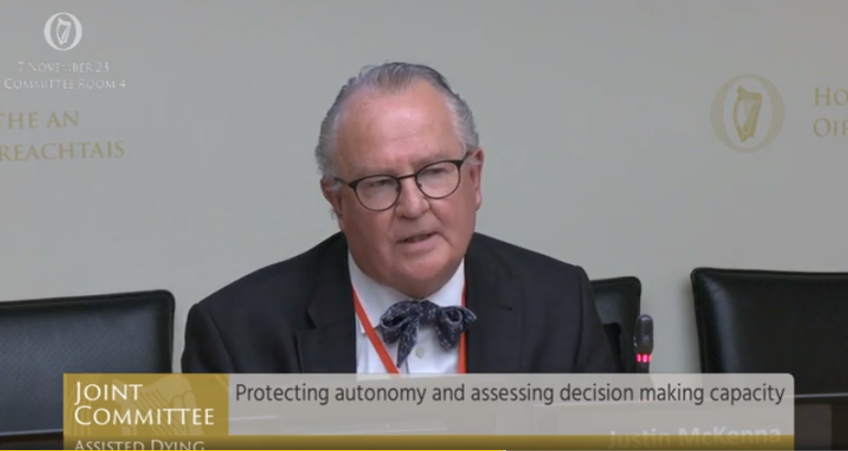A pro-euthanasia activist with three murder convictions has helped an Irish man struggling with mental health to secretly access assisted suicide in Switzerland.
On Tuesday, Emer Maguire told the Oireachtas Committee on Assisted Dying that her uncle Jay died by assisted suicide on the 26th September this year, with the help of Sean Davison.
Davison is the UK director of Exit, a “right to die” group that believes that any mentally competent adult should be able to access assisted suicide for any reason. They are active in Ireland.
Davison was convicted in three distinct cases of premeditated murder in South Africa in 2019. In each instance, he assisted ill individuals who expressed a desire to end their lives, one of whom was his own mother. It was his sister who ultimately reported him to the authorities.
Struggling to hold back her tears, Mrs Maguire told the Committee that her uncle was in good physical health, though he suffered of mental health issues, and travelled on his own to Switzerland, where he was met by Davison. Davison had organised Jay’s application for assisted suicide in a clinic there and identified his body after the lethal procedure, according to the testimony presented to the Oireachtas.
The family members were unaware of their relative’s intentions, and they were informed by Davison only five days after Jay’s death and cremation.
“Those closer to him were aware that he was struggling with mental health and encouraged him to seek help. However, he managed to master most of this, with most of the people around him”, Emer Maguire told the Committee.
Only after his death, the family discovered that Jay was a member of Exit for fifteen years. This extreme organisation facilitates the suicide of competent adults. Their Irish connection is something worth exploring.
“Exit supports the Swiss model of assisted dying laws which are not based on strict medical criteria”, they say on their website. In other words, they campaign for assisted suicide being available not only to those who are terminally ill or suffer an incurable disease but to every adult who has mental capacity.
Exit has a branch in Ireland that is led by Tom Curran. Ten years ago Mr Curran’s wife, Marie Fleming, lost a famous “right-to-die” case.
Speaking on RTE’s ‘Claire Byrne Live’, two years ago Mr Curran said that he supported the “right” of a healthy woman to die by assisted suicide in Switzerland, because she did not want to continue living once her sick husband had died in the same way.
Last month he was invited to address the Oireachtas Committee on Assisted Dying, where he advocated for the Swiss model to be implemented here.
The founder of Exit International, Philip Nitschke, also known as “Dr Death”, held suicide workshops in Ireland in the past.
Dr Nitschke is also behind a suicide machine called “Sarco”, after sarcophagus, approved for use in Switzerland. The suicide pod releases nitrogen and kills in 10 minutes.
Sean Davison, who leads Exit UK, moved to England after having lost his medical licence to practice in New Zealand, because of his murder convictions. In 2019 he was sentenced eight years house arrest, five of which suspended.
This conviction happened while he was also the president of the World Federation of Right to Die Societies. This same organisation will have its next global conference here in Ireland next year, hosted by End of Life Ireland, the main group campaigning for the legalisation of euthanasia here.
Emer Maguire presented her uncle’s case to the Committee to highlight the shocking impact that assisted suicide has on families and friends, but this case also shows the malign presence of Exit in Ireland. This organisation and its extreme ideology have received no proper scrutiny by the media.

